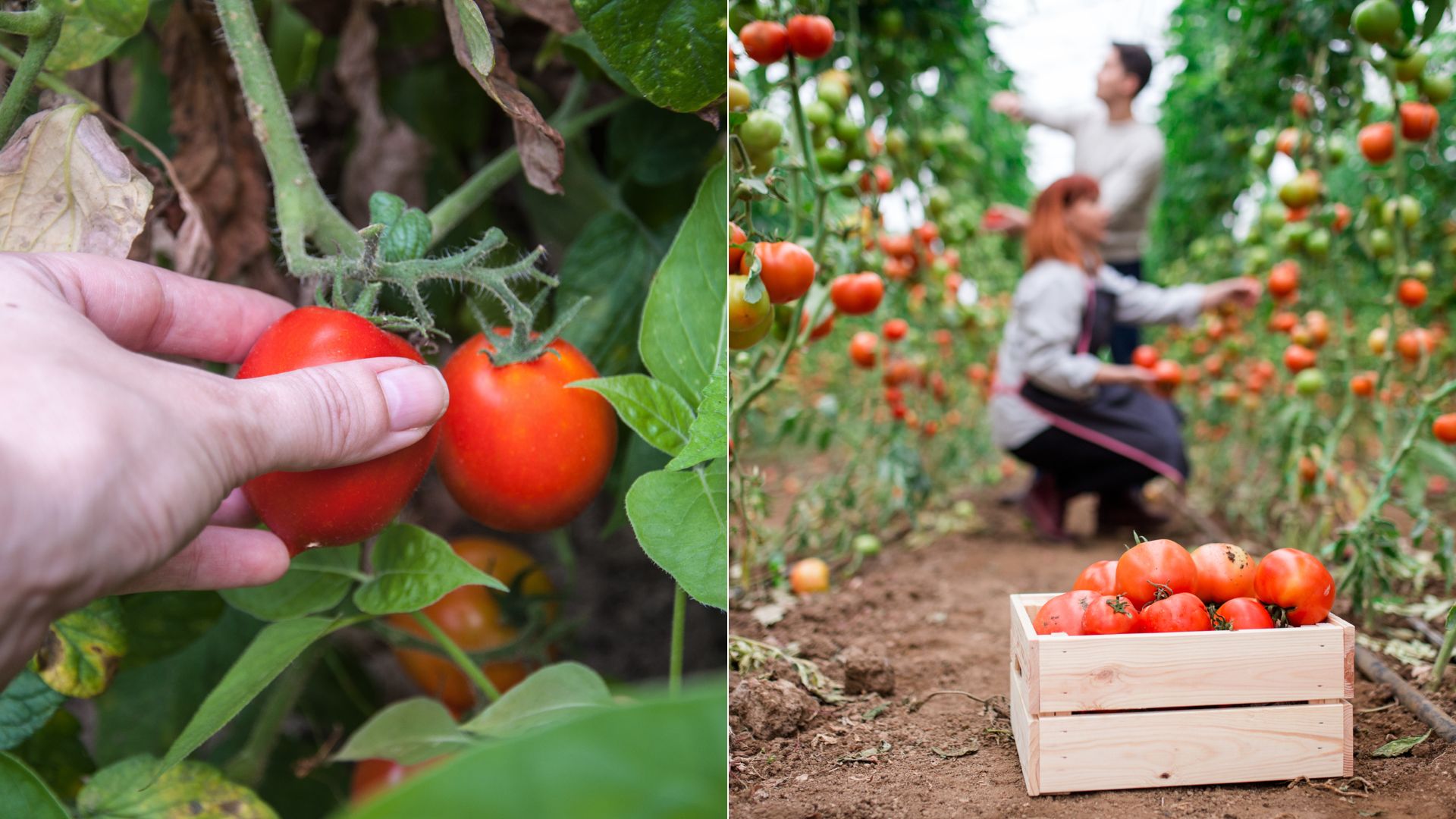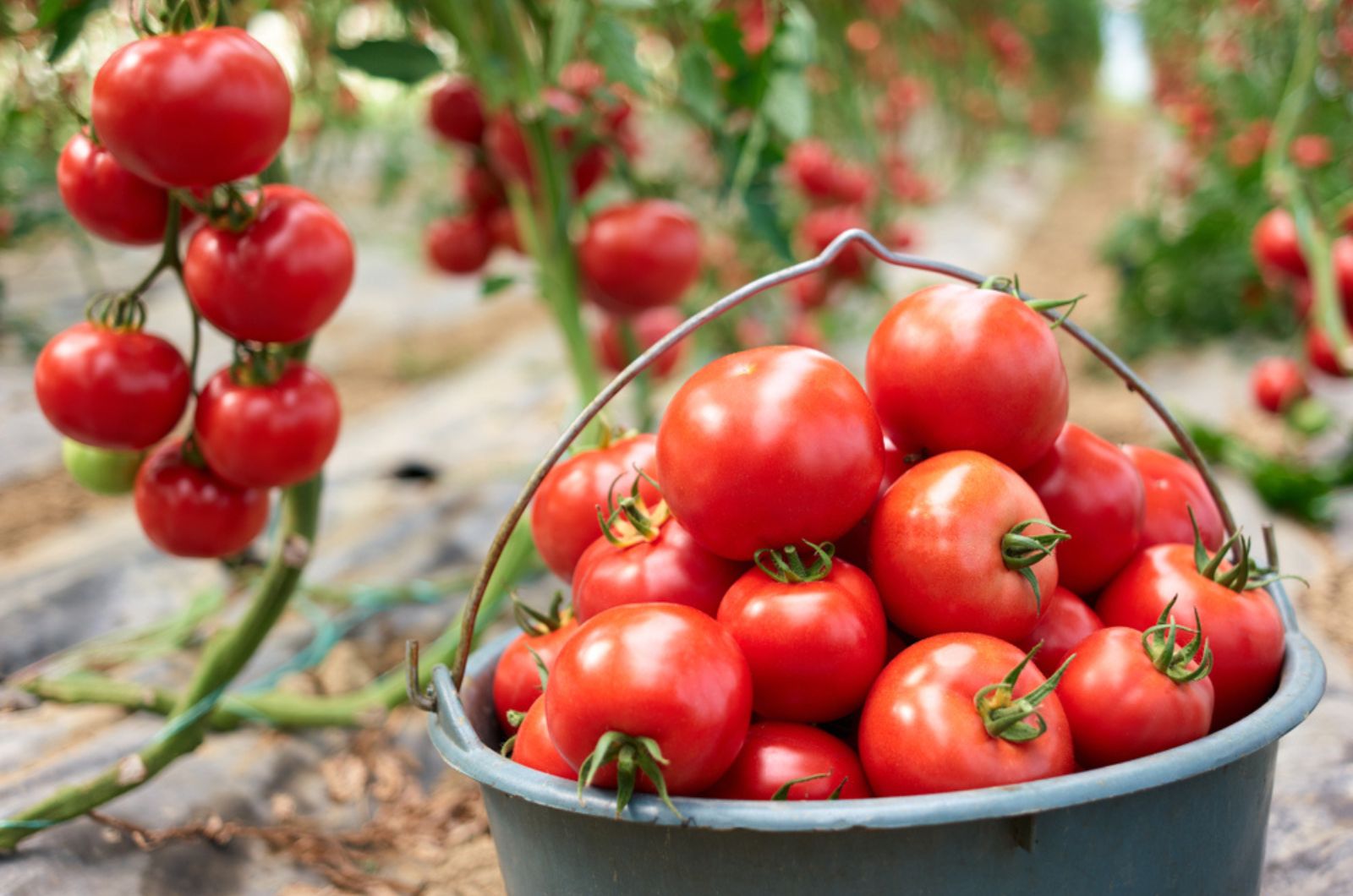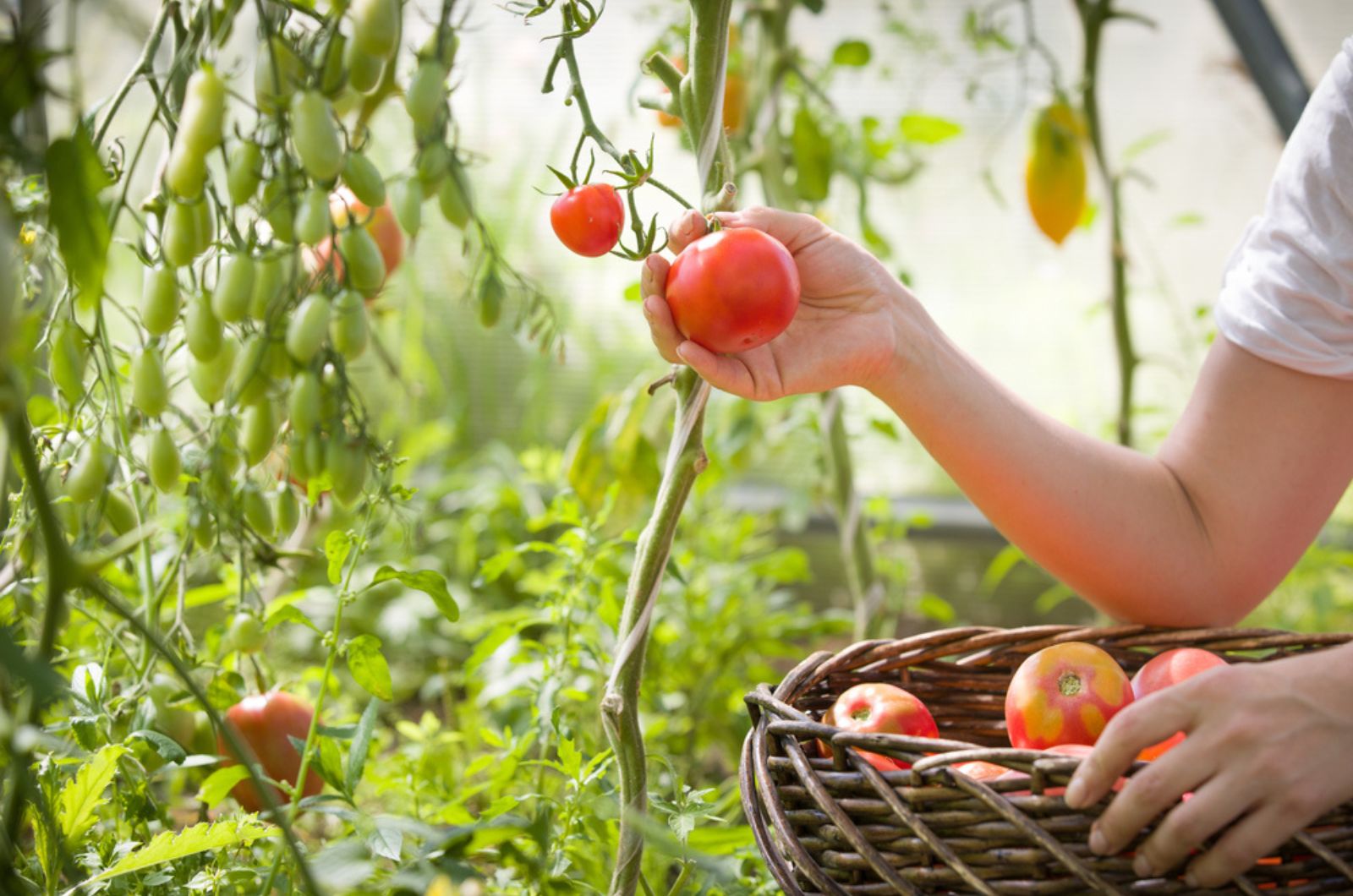In the sunny days of summer, gardens come alive with tasty treasures, and one of the stars is definitely tomatoes!
These round and juicy fruits bring the taste of summer to your plate. But there’s a trick to getting the best flavor – knowing when to pick them. Just like choosing the ripest fruit at the store, picking tomatoes at the right time makes a big difference.
In this article, we are going to discover some simple tricks that will help you decide when your tomatoes are ready to be plucked so that you can enjoy their deliciousness at its best. Let’s get started!
Picking Tomatoes Early – To Pick Or Not To Pick?
It might be tricky to know when to pick your tomatoes. You might think that the perfect time to pluck them is when they are red and firm, but that’s not usually the case.
The best time to pick your tomatoes is when they have turned one-half or even one-third of their ripe color. Your tomatoes stop taking up nutrients from the plant once they start to change color from green to pinkish.
So, there’s basically no point for them to stay on the vine. However, if you keep them on their vines, tomatoes will keep on ripening without any problems.
Still, it’s important to mention that tomato spilitting might occur if you keep your tomatoes on vines for too long. This is what attracts numerous pests, diseases, and animals that can ruin your crops.
When you pick your tomatoes early, you also keep the weight of your tomato plants. Tomatoes are quite heavy and can easily damage overloaded vines, especially in wind and rain.
Overloaded branches frequently easily split and tear away from the plant, even without a storm. This can harm the rest of the plant in addition to ruining the tomatoes that are growing on the torn-off limbs.
Even though it doesn’t benefit it at all, as long as a tomato is still on the plant, it will continue to send it energy and nutrients. However, by picking early, those resources can instead be used to grow additional tomatoes and new flowers.
Additionally, if there are too many fruits ripening on the vine, then your plant will reduce flower production. This can significantly reduce your harvest at the end of the season.
Now you see why it is better to pick them earlier. Don’t worry, unripe tomatoes will keep on ripening if you keep them in a good location.
Also read: 8 Simple Strategies To Get More Tomatoes And Boost Your Harvest
Ripening Tomatoes Off The Vine
Surprisingly, once the tomatoes have started ripening, they don’t need too much sunlight exposure. Quite the contrary, too much sun can lead to blisters and injuries – this is why splitting occurs.
So, once you pick your early tomatoes, it’s best to keep them away from sunny windowsills. Keep them in shady and cool areas instead.
Temperature for your tomatoes should also be taken into account. So, the best temperature range for ripening tomatoes is between 60 and 70 degrees. This is how you get the sweetest tomatoes – anything below will prevent ripening, and anything above will turn them mushy.
Air circulation also plays an important role. They will ripe evenly and at a much quicker pace when there is proper airflow. You might want to consider placing them on a baking rack or bread rack because the air can reach them from above and below.
What most gardeners also do is create their own drying rack.
Here’s a useful video for building a drying rack:
I keep my tomatoes in the garage and they ripen magnificently. You can keep them in a barn or on a shady porch as long as they are not too hot or cold. They are like vampires, just keep them away from the sun!
How To Store Them Properly
If your tomatoes are still not ripe, then you shouldn’t put them in the refrigerator. The entire ripening process will be halted and your tomatoes will lose their nutrients and flavor.
You can keep your tomatoes in the fridge for a bit if you want to cool them, but it’s not recommended for long-term storage.
It’s best to keep them at room temperature, ideally around 68 to 72 degrees Fahrenheit. If you have an abundance of tomatoes, consider freezing them. Wash, dry, and cut them into pieces before freezing. Frozen tomatoes are best for cooking rather than fresh eating.



